► e-4orce and 2WD versions driven
► 63 or 87kWh battery
► Good, if not class-leading efficiency
Despite over a decade of Leaf production split over two generation, the Nissan Ariya is only the second all-electric production car from the Japanese giant. The question is whether Nissan has learnt from the Leaf to ensure the Ariya rises to the top of the class, or if it’s the difficult second album?
Like key rivals from the Volkswagen Group and Hyundai/Kia, two battery sizes are available and there’s the option of two or four-wheel drive. As for pricing, it’s similar to the Kia EV6 and Hyundai Ioniq 5 if pricier than a Skoda Enyaq or Toyota bZ4x. In other words, it’s bang on for sub-premium e-SUVs.
We’ve driven front-wheel drive versions with both the big and little battery, plus the e-4orce 4WD on Tarmac, snow and ice. In other words, we’ve been rather thorough.
Styling and design
The Ariya boasts concept car looks inside and out, thanks to futuristic lines, flowing curves, and an interior that celebrates its Japanese heritage with an almost zen-like minimalism. As we’ll come onto, it’s great for ambiance if not entirely successful from a usability standpoint.
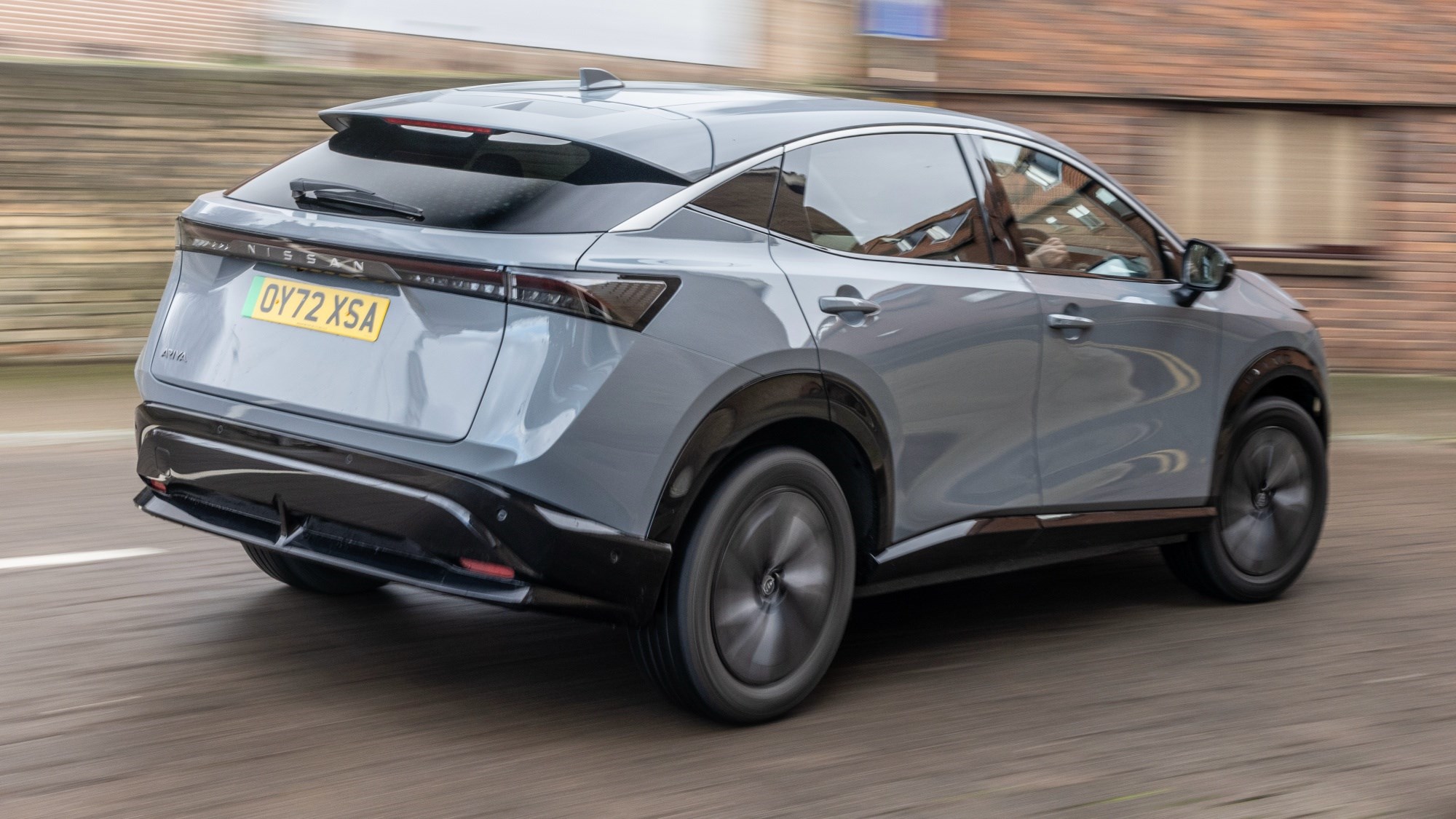
Nissan’s trademark ‘V-motion’ motif has been redesigned for a new electric age, and there’s a fashionable coupe-like profile, big wheels and a full-width light bar across the rear end. All very on-trend, especially if you pick the copper paint colour – some of those sharp lines and creases are lost if you choose a dark hue. In the new world order where the Ioniq 5 and EV6 are now design leaders, Nissan’s latest effort still stands out.
The interior’s packed with wow factor on face value, too. It boasts a zeitgeisty single panel dashboard, with simple-to-use integrated screens. The clean look extends to the flat floor that gives you a lounge-like feel when you’re inside. Most materials feel suitably premium, although the touch-sensitive heater controls aren’t as user-friendly as traditional physical controls.
There’s some attention to detail with backlit geometric patterns dotted about in panels you’d not normally look at, and some quirks, too: you move the centre console back and forth electronically with switches by your hip and, as well as a conventional glovebox in front of the front passenger, there’s a second electronically assisted one below the central infotainment screen. A bit unnecessary, Nissan.
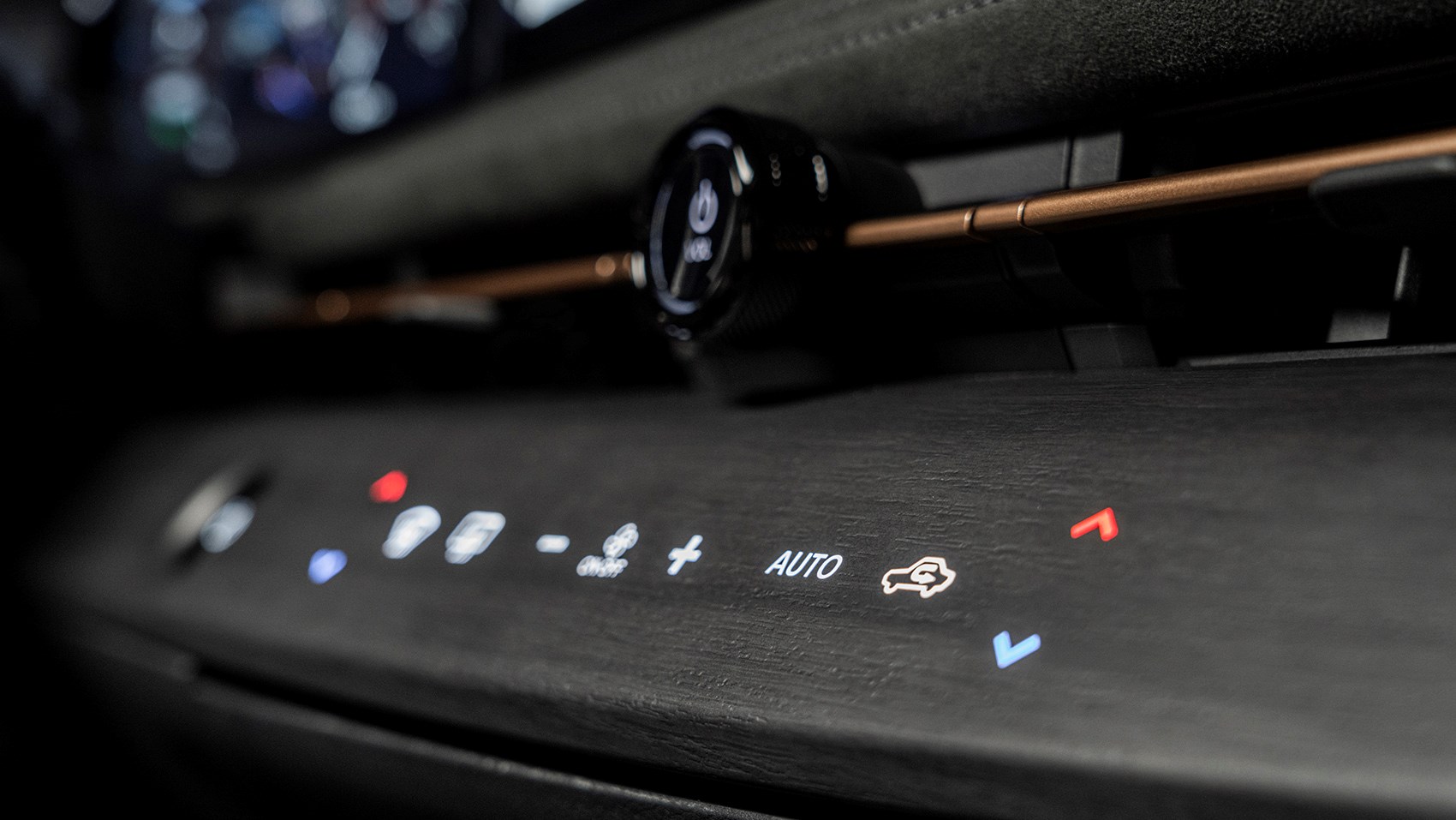
What’s it like to drive?
The entry-level front-wheel drive version gets a 63kWh battery pack and single 215bhp single e-motor. This is likely to be the firm’s best-selling Ariya, and is pitched against the entry-level EV6, Ioniq 5 and Mustang Mach-E as well as mid-range versions of the Volkswagen ID.4 and Skoda Enyaq iV.
Plant your foot on the accelerator from a standstill and you’ll feel the front tyres scrabble a little before the 2WD Ariya bites and goes. A 0-62mph time of 7.5 seconds is totally believable, with acceleration tailing off somewhat as you approach motorway speeds. That puts it ahead of entry-level versions of the Enyaq and ID.4 and on par with the RWD EV6. Although the 87kWh version gets a little more power, it’s offset by the additional weight making it marginally slower. Not that you’d notice in the real world.
We’d recommend avoiding the top-spec’s 20-inch wheels even if they look good: they make the ride coarse on anything but sublime tarmac, while road noise is a little disappointing in the context of the rest of the car’s overall hush. On rougher, pockmarked surfaces, the large wheels telegraph almost very bump as a muffled jolt through the cabin. An Enyaq is a far comfier and cheaper alternative.

Nissan’s included its e-Pedal technology and it works just as much as the Leaf. Essentially it gives you enough regeneration for single-pedal driving (right to a standstill), which is perfect for urban driving. It provides a significant amount of braking force by just lifting off the accelerator pedal – and you soon get used to this method of driving. There are Eco and Sport modes – Eco backs off accelerator response while Sport sharpens it up, while adding weight to the steering.
And it’s here that the Ariya will divide opinions. While some will appreciate the quickness of its steering, there’s too much self-centring force. This means the weighting changes significantly as you go from left to right lock and vice versa, making it harder to place exactly where you want on the road. You also don’t have to push too hard to find the front tyres losing their purchase on the road’s surface – an Enyaq or EV6 would be far more neutral.
Is the e-4orce any more fun?
Fun might be pushing it, but having two equally powerful motors front and rear certainly sorts the traction out. Total output is 302bhp or enough for a 5.7 second 0-62mph run. Although it’s certainly not Tesla rapid, anyone jumping up from a Leaf or Qashqai will be more than happy, and we certainly didn’t want for more power on our varied test route.
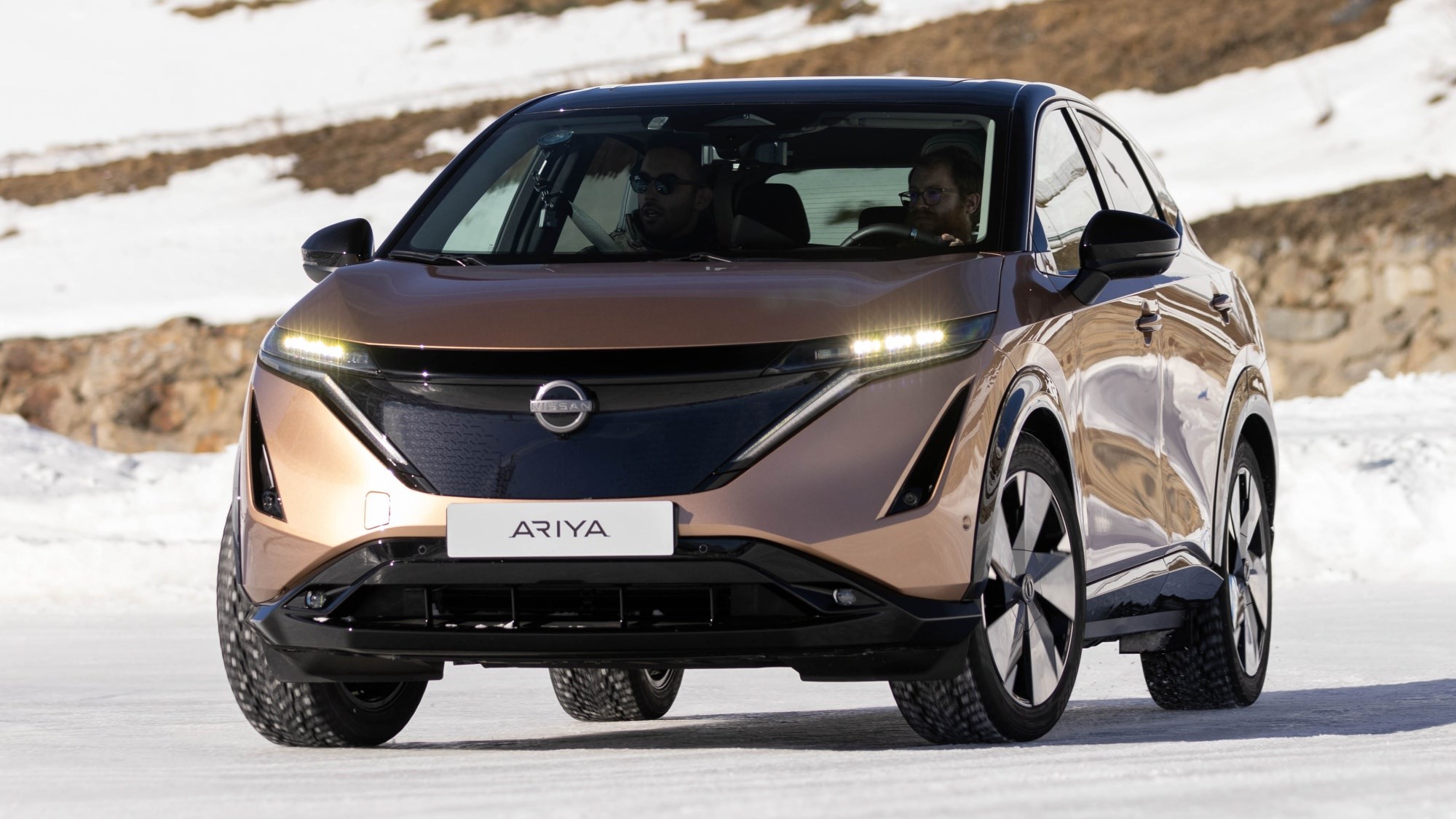
Cornering is certainly improved, with the ability to vary torque front to rear and vector torque by fiddling with the brakes bringing a less nose-led balance. Even so, you’ll need an ice track and all the electronics off before you can start throwing some drifty shapes. A dual-motor EV6 is a more satisfying steer, although we can’t vouch for its off-road ability.
Sure, the Ariya e-4orce is unlikely to trouble a proper off roader in truly tricky conditions, but it’s able to deal with slippery ascents and wheels dangling in mid-air whilst still maintaining forward propulsion. For most people, that’ll be more than enough.
What’s it like inside?
That infotainment screen shares its tech with the latest Qashqai, so it’s laid out well and easy enough to use (albeit a bit of a stretch), so it’s already scoring extra usability points compared with the Volkswagen ID.4. But in order to get that clean effect on the dashboard and the centre console, the ‘buttons’ are touch sensitive with haptic feedback. You tap the ones on the dashboard, but have to push the ones on the centre console, which’ll be confusing when you take your eyes off the road to use them the first few times.
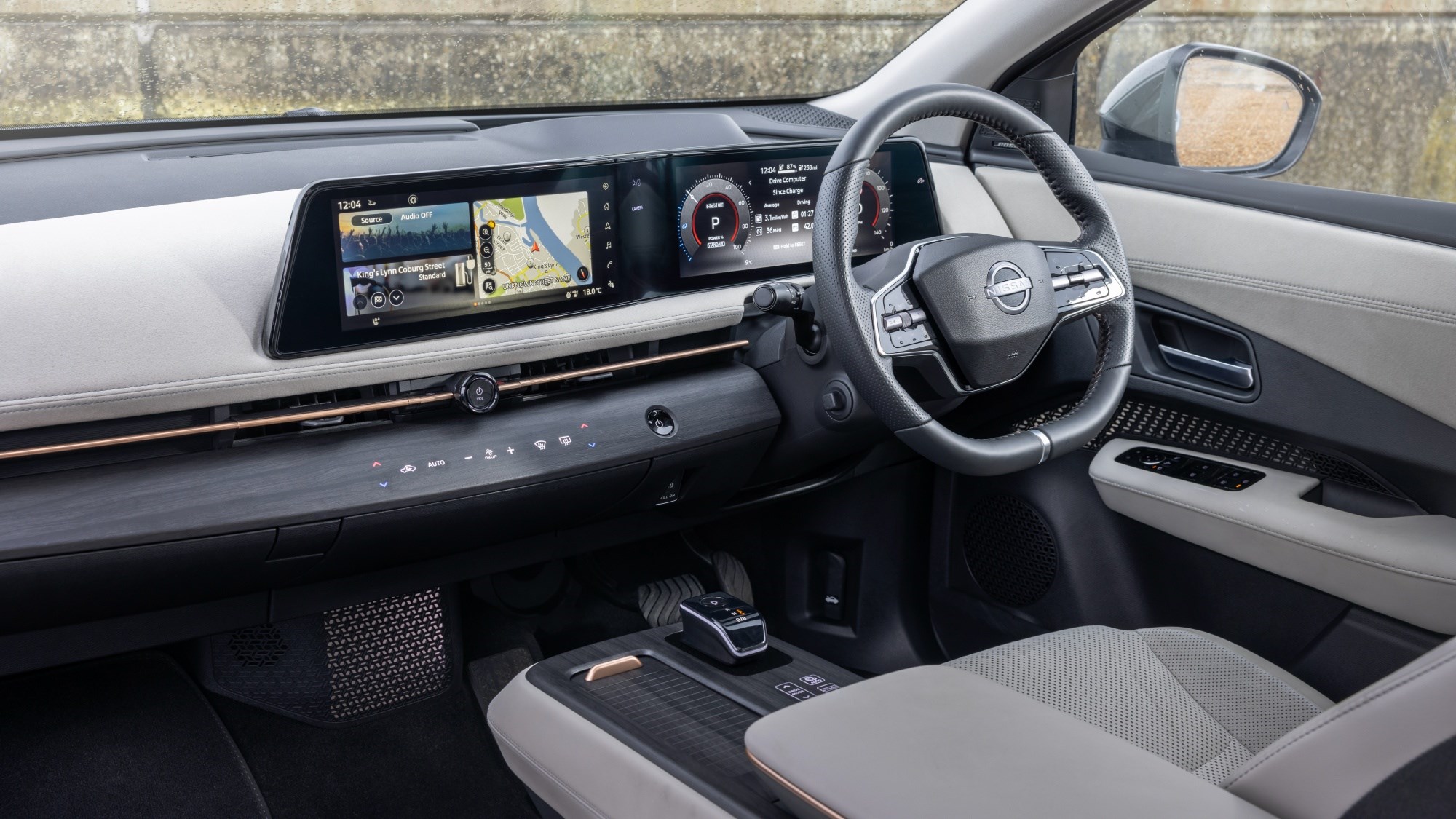
Rear legroom is great for adults, but that concept car silhouette (and the inclusion of a panoramic glass roof) comes back to limit stretching room for adult-size passengers thanks to a lack of headroom. The boot is a good size, too, but is outdone in terms of volume by the ID.4 and Mach-E – two of the Ariya’s closest rivals.
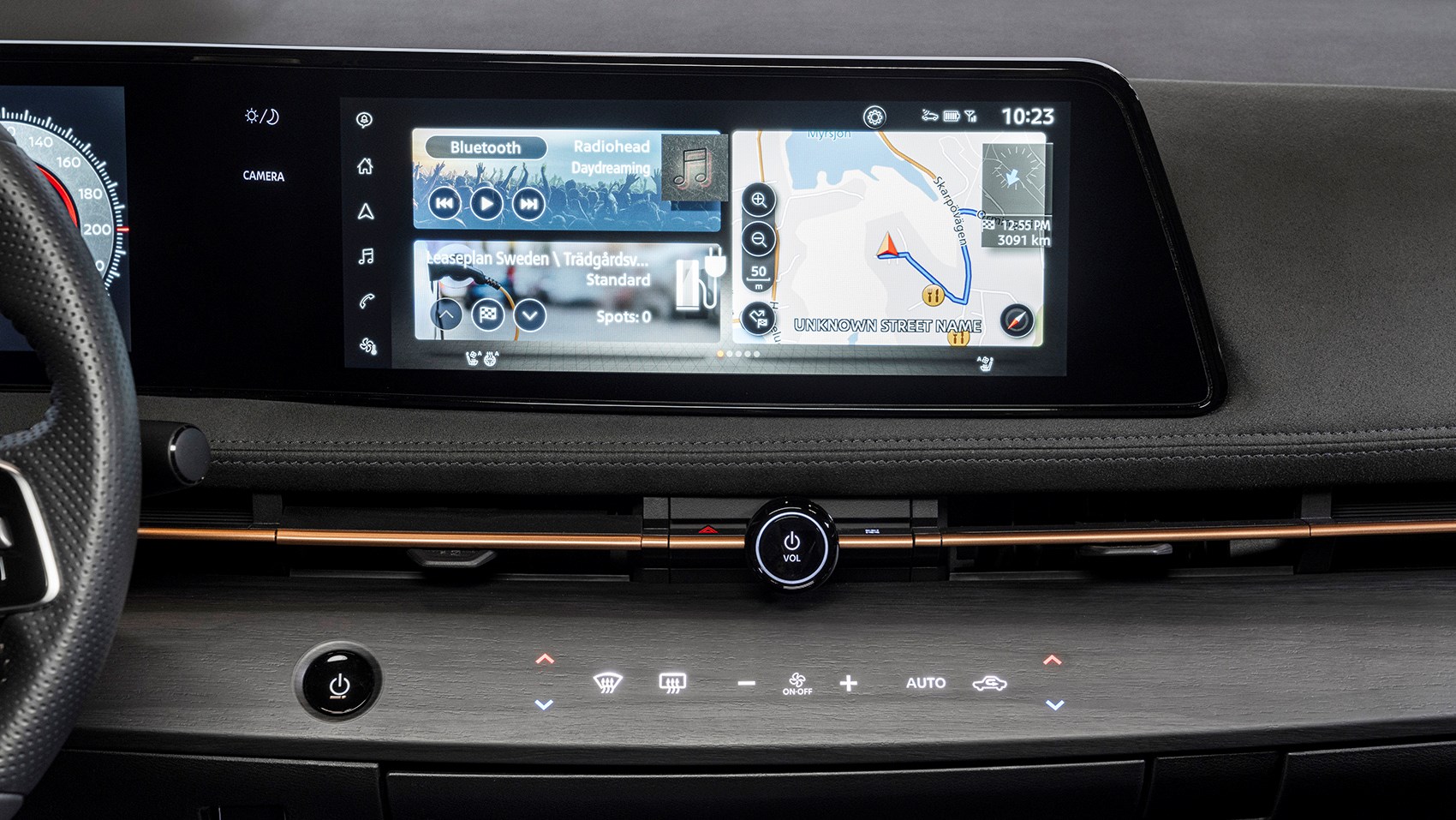
The Ariya uses a CCS charger port in Europe and can cope with up to 130kW charging speeds, with the 63kWh battery capable of charging from 10-80 per cent in half an hour.
Nissan Ariya: verdict
The Ariya is certainly a massive step on from the second generation Leaf. With its concept car looks inside and out, decent rear space and efficiency of around 3.5 miles per kWh in our hands (2WD), it’s a perfectly sensible SUV with a useful dose of desirability.
However, the boot isn’t particularly impressive for. a family SUV, while the ride and handling disappoints. We wouldn’t mind its indifference to corners if it soaked up the worst British roads could throw at it, but the Ariya is fidgety on all but billiard table smooth roads as well.
Chatting to engineers suggests there’s more to come from the Ariya, but for the moment we’d still rather have a Kia EV6, thanks.